Revision Notes: Cell The Unit Of Life | Biology Class 9 ICSE PDF Download
| Table of contents |

|
| Modern Cell Theory |

|
| Variations in Cells |

|
| Structural Organisation of a Cell |

|
| Differences between plant and animal cells |

|
| Functions of Cells |

|
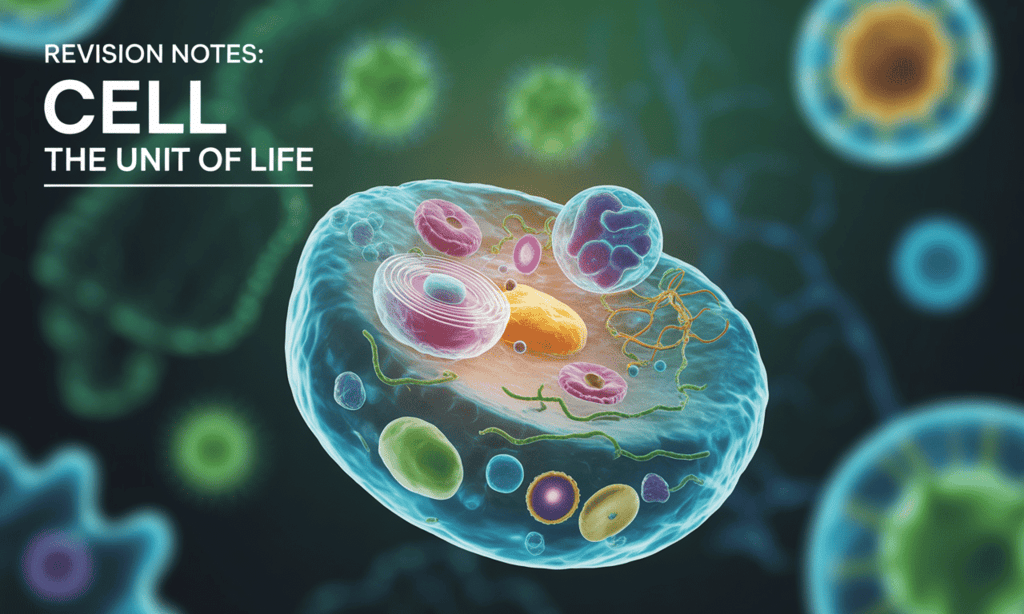
Modern Cell Theory
- The cell is the structural and functional unit of all living organisms.
- The cell is responsible for all the functions of living organisms.
- All cells come from pre-existing cells.
Variations in Cells
- Cells can differ in number, size, and shape.
- Examples:
- Number: Amoeba (single-celled), Humans (multicelled)
- Size: Bacteria (smallest), Nerve Cells (longest), Ostrich Eggs (largest)
- Shape: Epithelial Cells (columnar shape)
Structural Organisation of a Cell
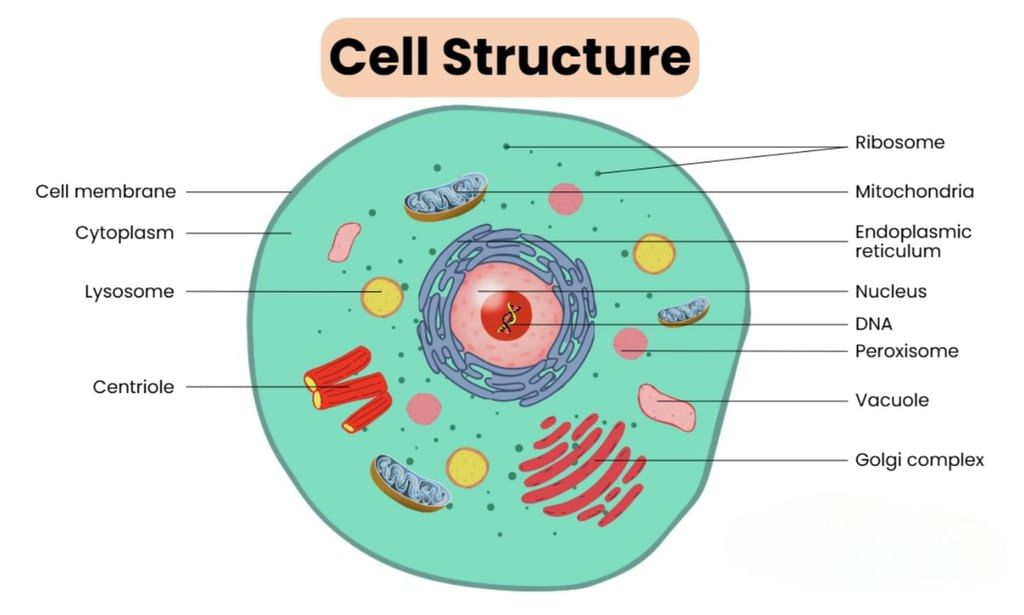
1. Plasma Membrane / Cell Membrane
- Nature and Occurrence: Forms the outermost covering in animal cells. It is a very thin, flexible, and delicate living membrane.
- Main Characteristics: The plasma membrane is semi-permeable, meaning it regulates the entry and exit of certain solutes and ions.
- Main Functions: Acts as an effective barrier, regulating the entry of specific substances into the cell.
2. Cell Wall (in Plant Cells Only)
- Nature and Occurrence: The cell wall is a non-living, rigid protective covering situated just outside the plasma membrane in plant cells. It is mainly composed of cellulose.
- Main Characteristics: The cell wall is freely permeable, allowing the passage of various substances.
- Main Functions: Provides rigidity and shape to plant cells, offering protection against external threats.
3. Cytoplasm
- Nature and Occurrence: Cytoplasm refers to the content inside the plasma membrane, excluding the nucleus.
- Main Characteristics: The cytoplasm contains a mixture of water, soluble organic and inorganic compounds, and various cell organelles.
- Main Functions: The cytoplasm is the centre of all metabolic activities in the cell. It is also the site for glycolysis, where pyruvic acid is produced.
4. Endoplasmic Reticulum (ER)
- Nature and Occurrence: The endoplasmic reticulum is an irregular network of tubular double membranes. It can be smooth (SER) or rough (RER).
- Main Functions: The ER provides a supportive framework for the cell. The rough ER (RER) is involved in synthesising proteins, while the smooth ER (SER) is responsible for lipid synthesis.
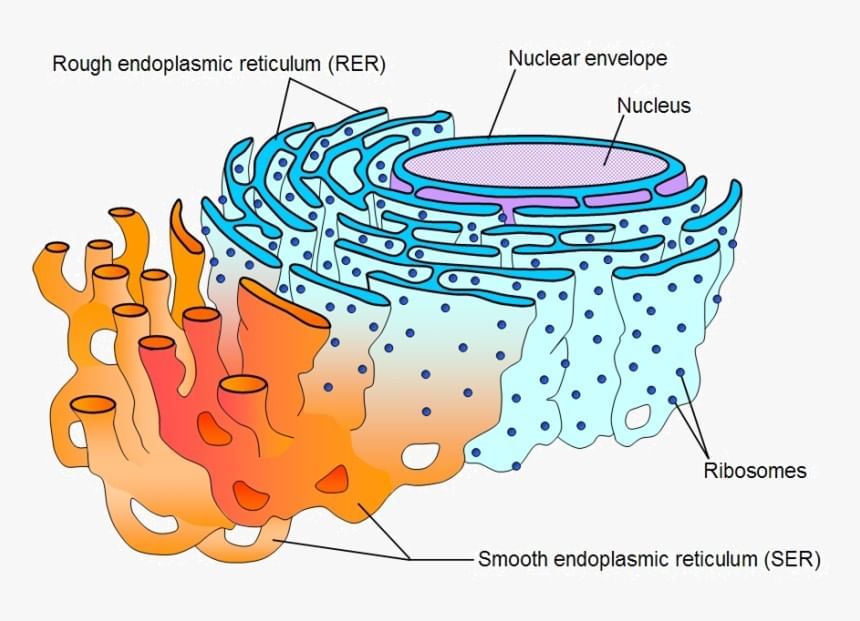
5. Mitochondria
- Nature and Occurrence: Mitochondria vary in shape but are usually sausage-like. They have a double wall, with the inner wall folded into structures called cristae. Mitochondria contain their own ribosomes and DNA, with several genes.
- Main Functions: Mitochondria are the sites of aerobic respiration, where ATP (energy) is produced with the help of respiratory enzymes.
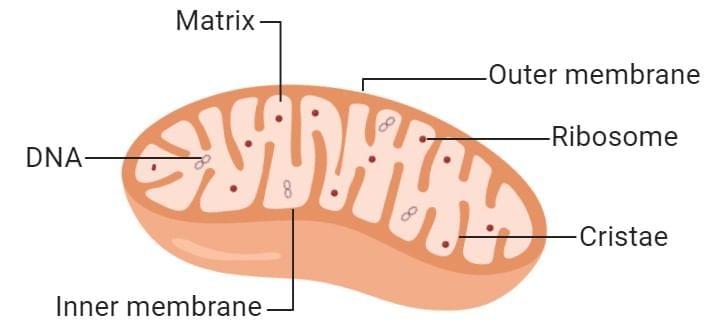
6. Golgi Apparatus (In Animal Cells) / Dictyosomes (In Plant Cells)
- Nature and Occurrence: The Golgi apparatus in animal cells consists of stacks of flattened membrane sacs. In plant cells, dictyosomes are sets of membrane-bounded, fluid-filled vesicles and vacuoles.
- Main Functions: The Golgi apparatus is involved in the synthesis and secretion of enzymes, hormones, and other substances. In plant cells, dictyosomes modify, package, and transport materials needed for the formation of the plasma membrane, cell wall, and other structures.
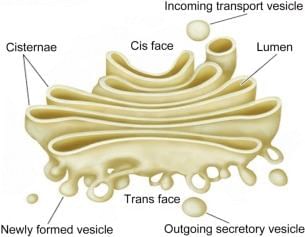
7. Ribosomes
- Nature and Occurrence: Ribosomes are dense, spherical granules that can be found scattered in the cytoplasm or attached to the outside of the endoplasmic reticulum. They are dense, non-membranous bodies composed mainly of RNA and proteins. There are two types of ribosomes: 70S and 80S.
- Main Functions: The primary function of ribosomes is the synthesis of proteins.
8. Lysosomes
- Nature and Occurrence: Lysosomes are simple, tiny, single-membrane-bound sacs.
- Main Characteristics: Lysosomes contain about 40 different types of enzymes.
- Main Functions: Lysosomes are involved in intracellular digestion and the destruction of foreign substances.
9. Centrosome (In Animal Cells Only)
- Nature and Occurrence: The centrosome is the region surrounding the centrioles, located near the nucleus in animal cells.
- Main Functions: The centrosome initiates and regulates cell division.
10. Plastids (In Plant Cells Only)
- Nature and Occurrence: Plastids are self-replicating organelles with their own genome. They have a double membrane and a proteinaceous matrix containing DNA. Plastids possess disc-like structures called thylakoids, which contain chlorophyll.
- Main Functions: Plastids have various functions, including:
- Chromoplasts: These organelles impart colour to flowers and fruits.
- Chloroplasts: Chloroplasts trap solar energy for photosynthesis.
- Leucoplasts: Leucoplasts store starch.
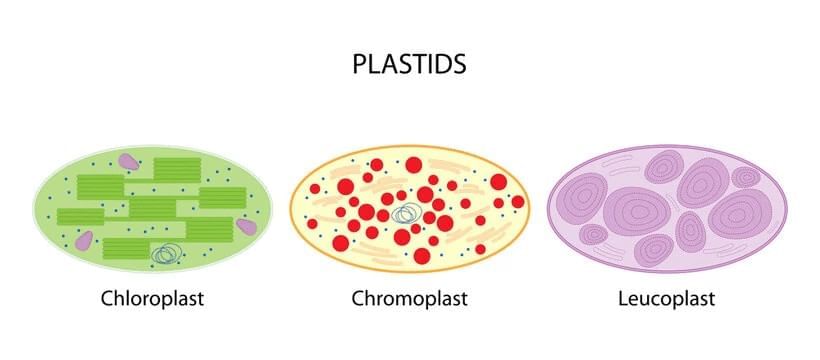
11. Nucleus
- Nature and Occurrence: The nucleus is a centrally located spherical cellular component, mostly dense and surrounded by a nuclear membrane with pores.
- Main Functions: The nucleus regulates cell functions and the cell cycle.
12. Nucleolus
- Nature and Occurrence: The nucleolus is embedded within the nucleus of the cell and can be one or more in number. It is round-shaped.
- Main Functions: The nucleolus produces ribosomes and participates in protein synthesis by forming and storing RNA.
13. Chromatin Fibres
- Nature and Occurrence: Chromatin fibres are a network of thread-like structures made up of DNA.
- Main Functions: Chromosomes, which are made up of chromatin, carry hereditary information or genes.
14. Vacuoles
- Nature and Occurrence: Vacuoles are fluid-filled or solid-filled membrane-bounded spaces. They are non-living structures and are larger in plant cells, while fewer and smaller in animal cells.
- Main Functions: Vacuoles are involved in the storage of water, other substances, food, pigments, and waste products. They also give turgidity to cells and help maintain osmotic pressure in cells.
15. Granules
- Nature and Occurrence: Granules are non-living structures that are small particles, crystals, or droplets found within cells.
Differences between plant and animal cells
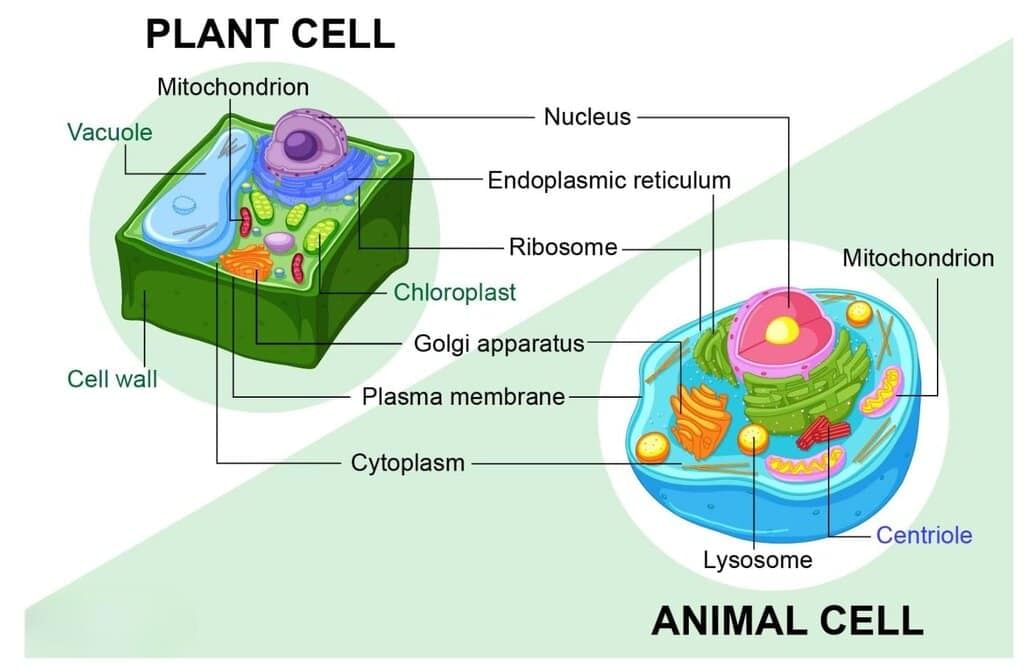
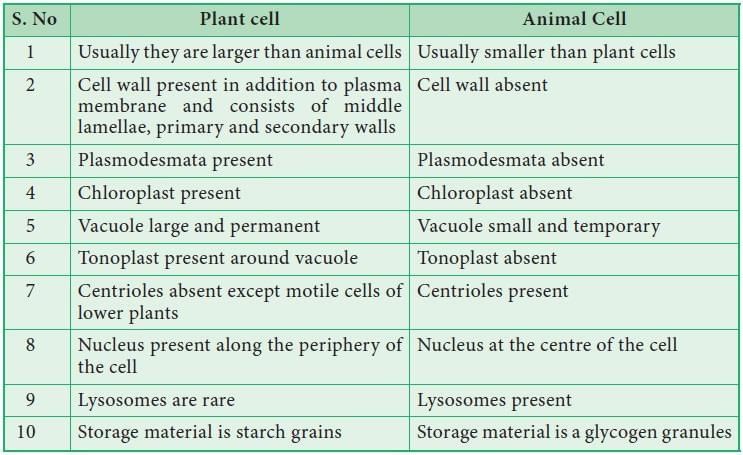
Functions of Cells
1. Growth: All organisms grow by increasing in size and the number of cells due to the production of more body and cell substances.
2. Repair and Regeneration: Injuries are repaired, and lost parts are regenerated through cell division.
3. Movement: Movement is possible due to the contractility of cells or cellular parts.
4. Feeding and Nutrition: Feeding and nutrition involve several steps, each resulting from cellular activities.
5. Circulation: Circulation of blood and other fluids occurs through forces set up by the contraction of muscle cells in the heart and other body parts.
6. Respiration: Respiratory gases are transported from the lungs to different body parts by red blood cells (RBCs).
7. Protection: The body is protected from germs and diseases by white blood cells (WBCs), which either devour germs or produce antibodies or antitoxins.
8. Sensation: Sensory cells detect touch, pain, heat, and cold, and the brain orders muscles to contract or glands to secrete through their cells.
9. Thermoregulation: Maintenance of body heat occurs through cellular activity.
10. Reproduction: All living organisms reproduce through cellular activity.
11. Transportation in Plants: Transportation of substances in plants occurs due to cellular activity.
12. Food Production in Plants: Food is produced in plants due to cellular activity.
13. Inheritance: Inheritance in an organism depends on the type of its germ cells.
|
18 videos|101 docs|19 tests
|
FAQs on Revision Notes: Cell The Unit Of Life - Biology Class 9 ICSE
| 1. What are the main differences between plant and animal cells? |  |
| 2. What are the functions of different organelles in a cell? |  |
| 3. Why is the cell considered the basic unit of life? |  |
| 4. How do plant cells contribute to the process of photosynthesis? |  |
| 5. What role does the cell membrane play in a cell's function? |  |




















